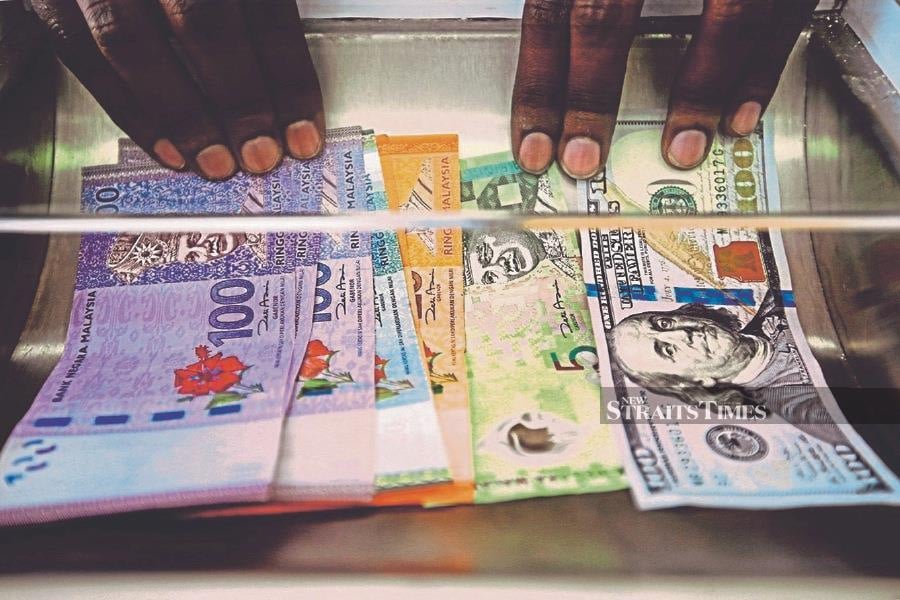KUALA LUMPUR: The ringgit has strong potential to strengthen to below 4.50 against the US dollar by year end.
This is backed by expectations that Bank Negara Malaysia will maintain its current policy stance for the rest of the year and the government's commitment to fiscal discipline, according to Kenanga Research.
The ringgit had faced pressure from elevated US core personal consumption expenditure readings and solid retail sales figures, denting hopes for a Federal Reserve (Fed) rate cut.
Kenanga Research said US indicators such as weak labour demand, sluggish wage growth, a rise in corporate bankruptcies, credit card defaults and auto delinquencies suggest that vulnerable segments of the economy are grappling with elevated interest rates.
The firm said this scenario has led to anticipation of further economic softness and the potential easing of inflationary pressures in the US, prompting the Fed to consider a rate cut as early as September.
"Concurrently, with expectations of Bank Negara maintaining its current policy stance for the remainder of the year and the government's commitment to fiscal discipline, there is strong potential for the ringgit to strengthen to below 4.50 by the end of 2024," it said in a note.
Recently, Bank Negara deputy governor Adnan Zaylani Mohamad Zahid said uncertainties over China's economic growth prospects and geopolitical crises have increased the US dollar demand as a safe-haven asset.
"Much has been made of the performance of the ringgit against the US dollar. Unfortunately, many see and use this as an indicator or barometer of how we are doing.
"This is an unfair assessment as it ignores the overall currency performance, the strength and fundamentals of our economy, and the outlook going forward," he said.
SPI Asset Management managing director Stephen Innes said Bank Negara's assessment is spot-on, but unfortunately, market dynamics often dictate currency movements.
He said even though the yen is significantly undervalued on a trade-weighted basis, market forces have still driven it to multi-decade lows, much like the ringgit.
"The main challenge for low-yielding Asian foreign exchange markets is the wide interest rate differentials between local and US returns.
"Unless domestic stock markets can outperform the US market with a comfortable risk-adjusted return, the ringgit may continue to struggle."
In forex markets, Innes said it is crucial to recognise that the primary drivers of the US dollar lie within US economic data and Fed actions.
Fortunately for the ringgit, he said weakening US economic data should lead to a softer Fed policy stance.
"I anticipate that the US dollar will trend downwards as the market responds to this softer data.
"This shift in expectations is likely to result in a more dovish Fed outlook.
"While the 4.50 level for the ringgit may represent an optimistic scenario where US-China trade tensions remain subdued leading to the US presidential election, I would feel more comfortable with the 4.60 level.
"This is considering geopolitical risks, safe-haven demand for the US dollar, concerns about a potential yuan devaluation if the curency doesn't strengthen, and the wider spot interest rate differentials between Malaysia and the US by year end," he added.






